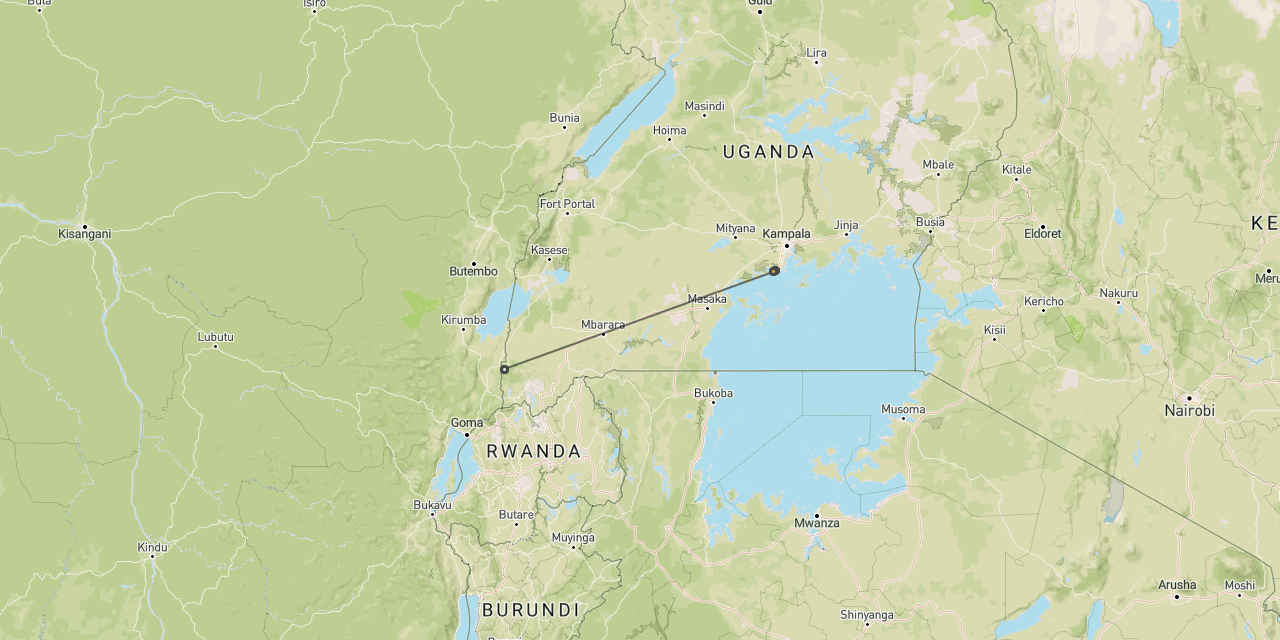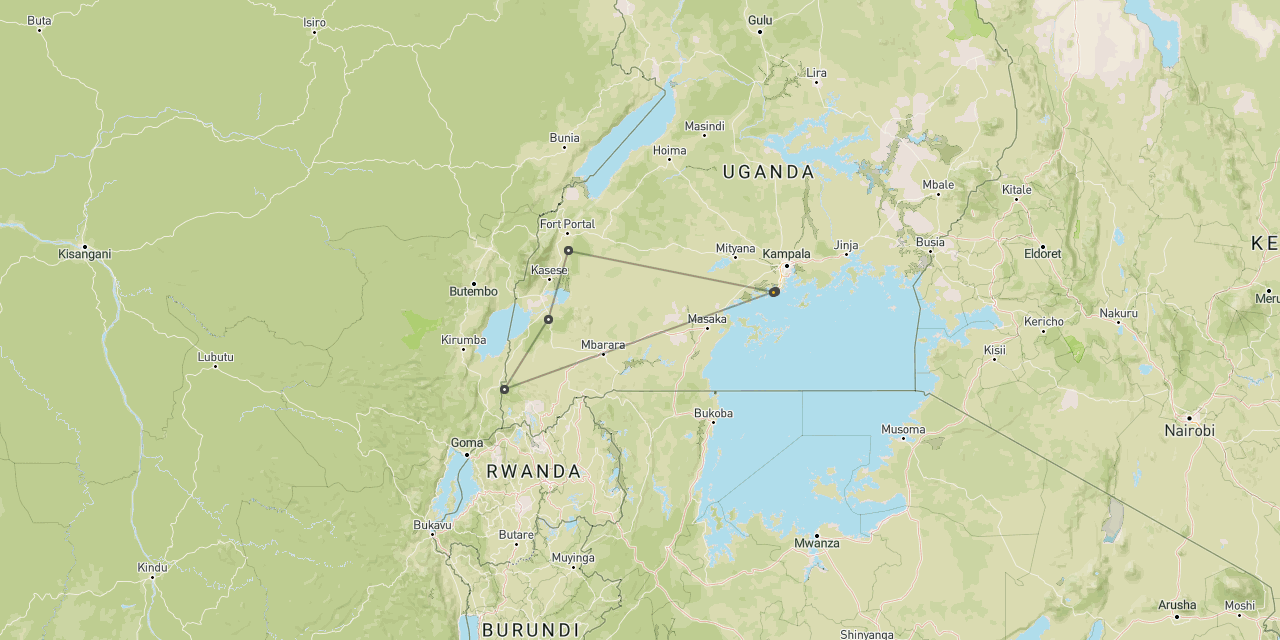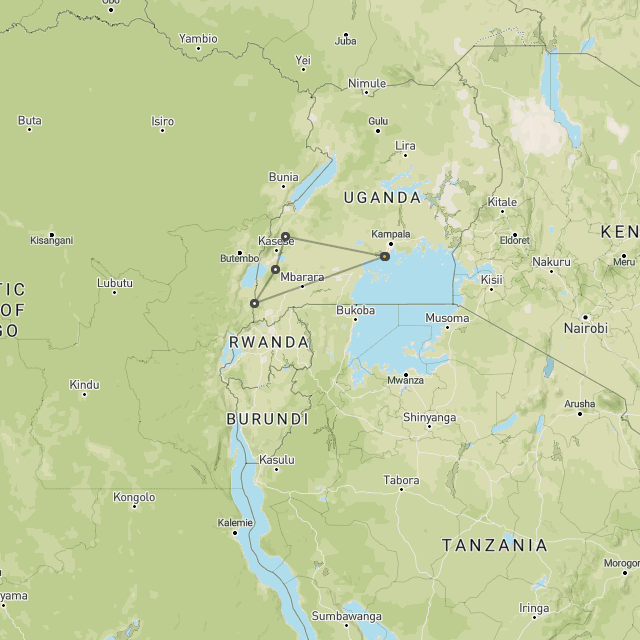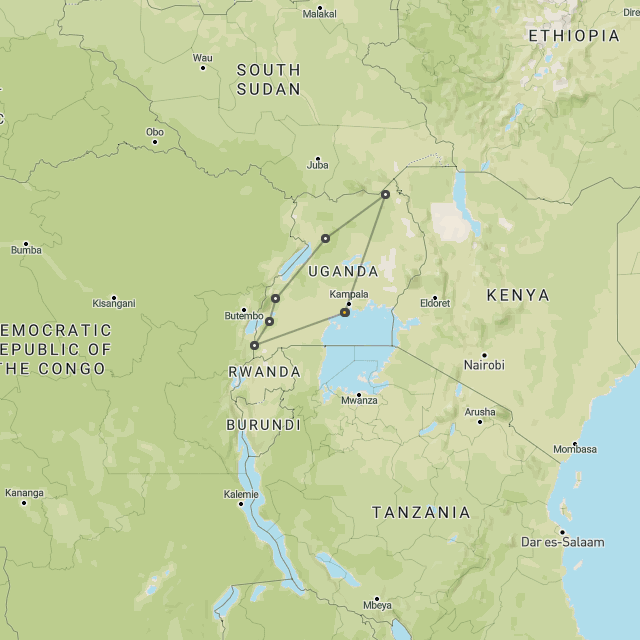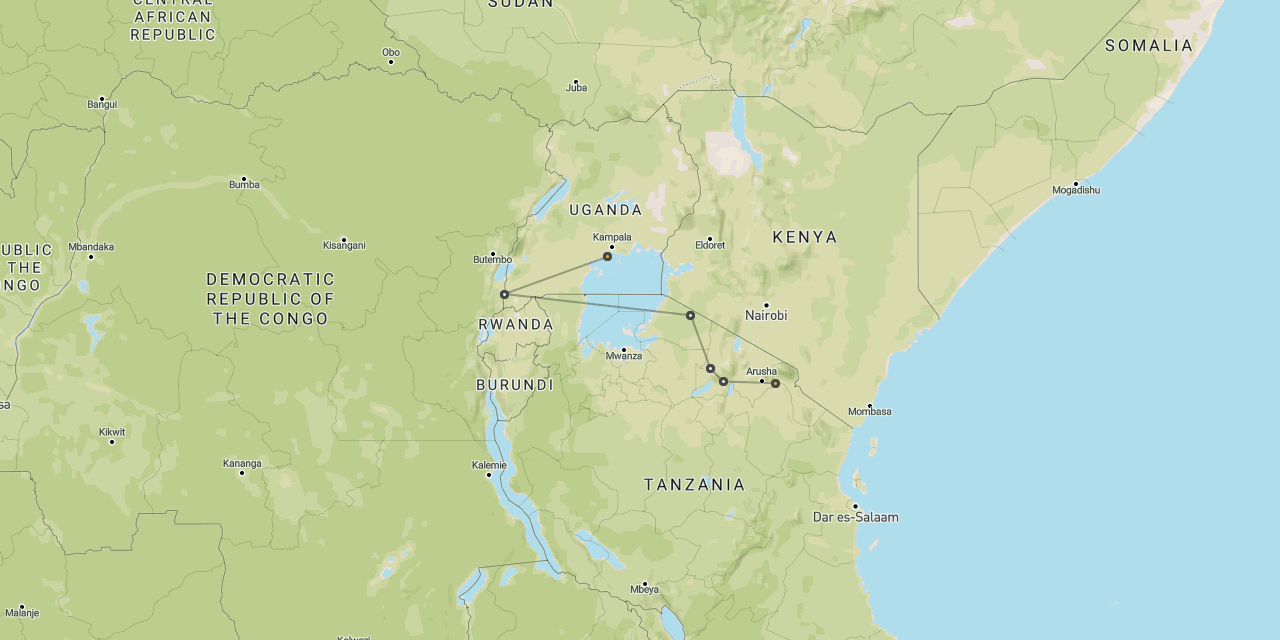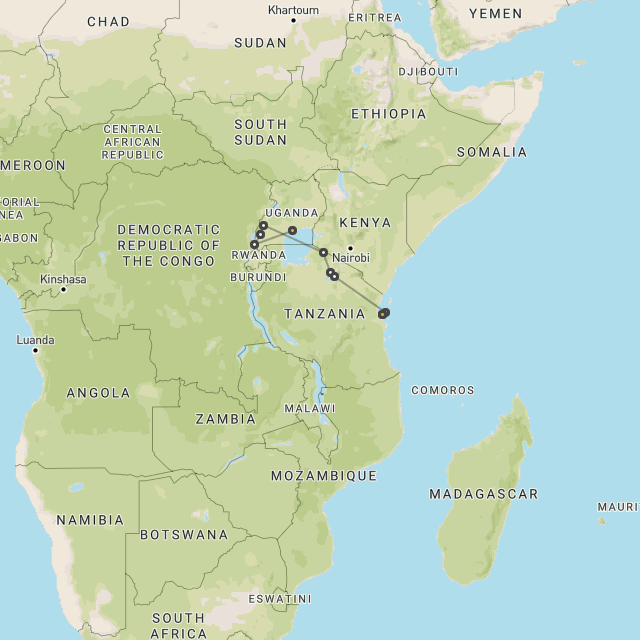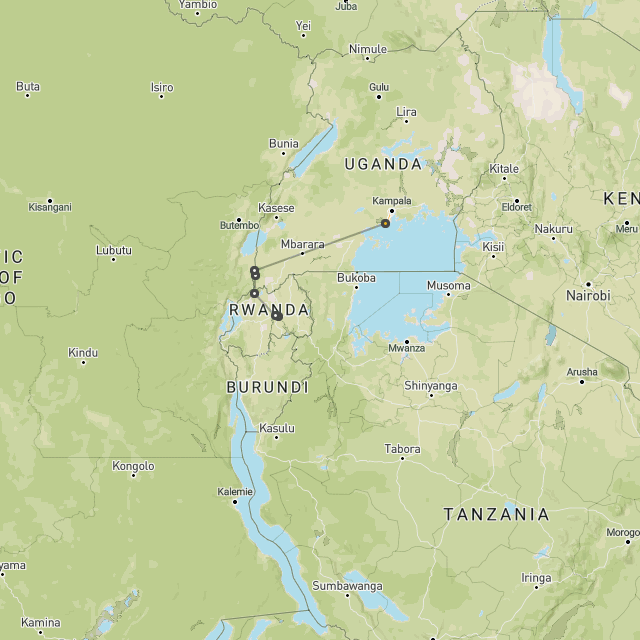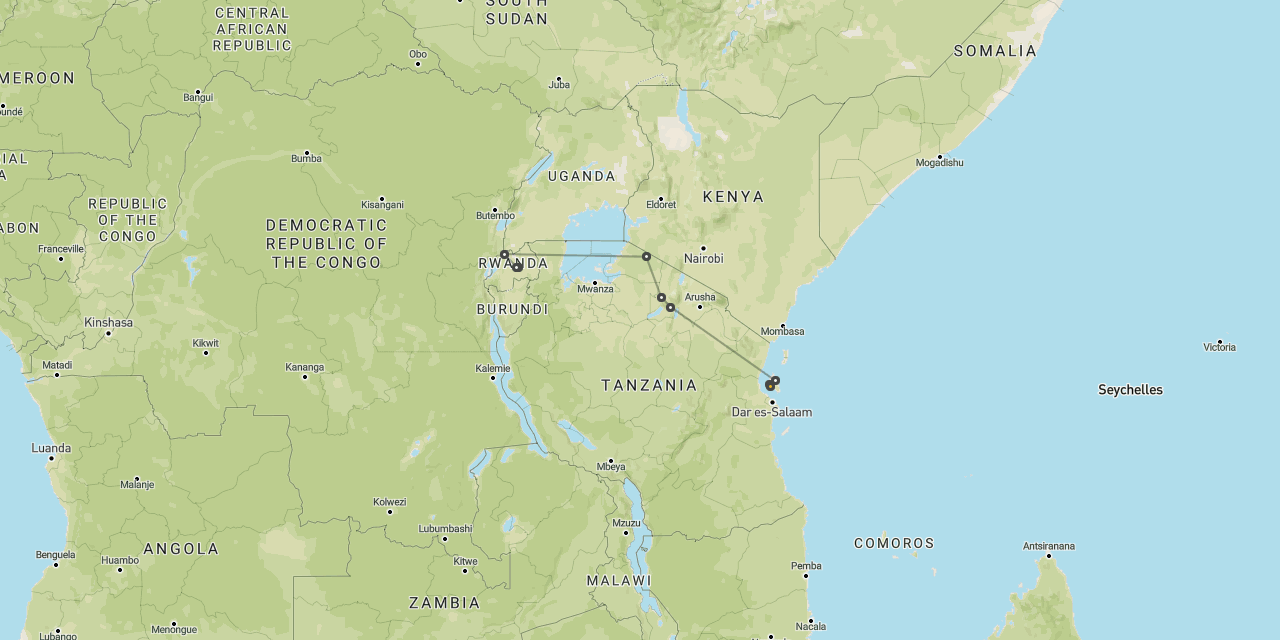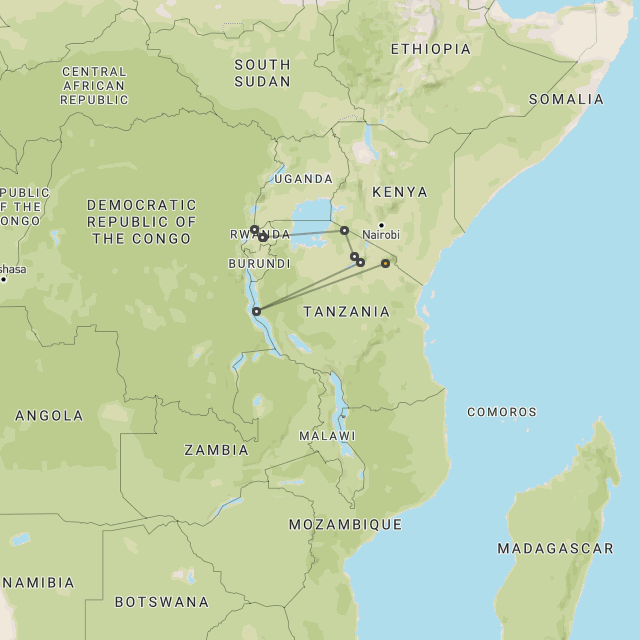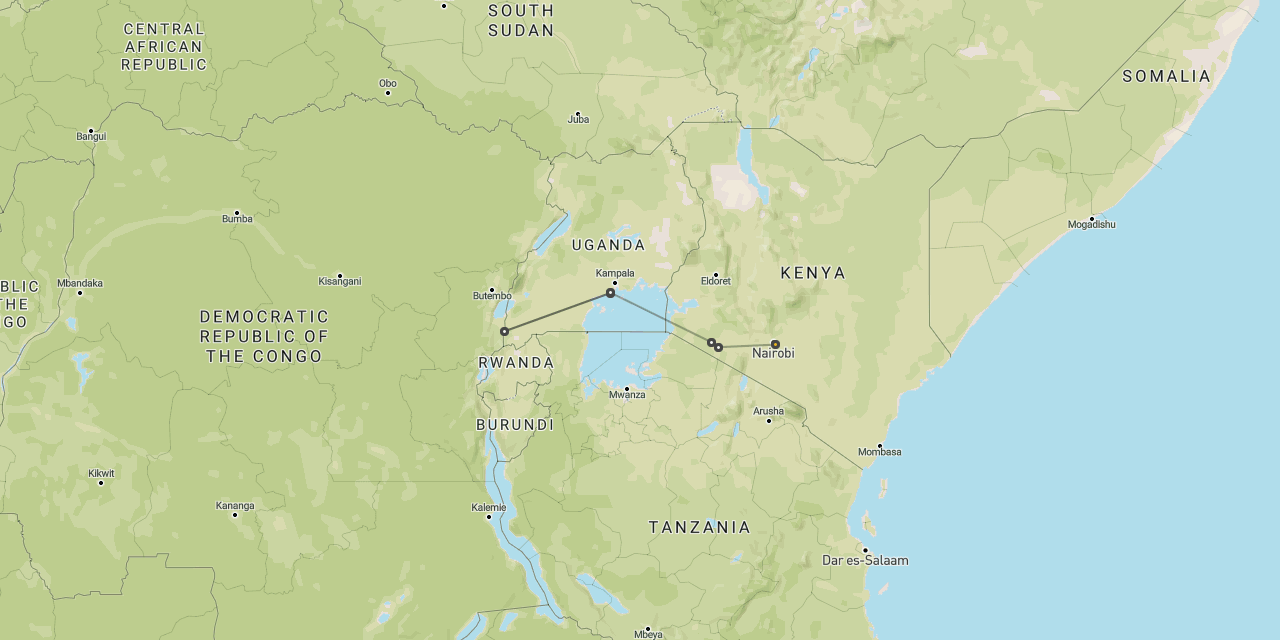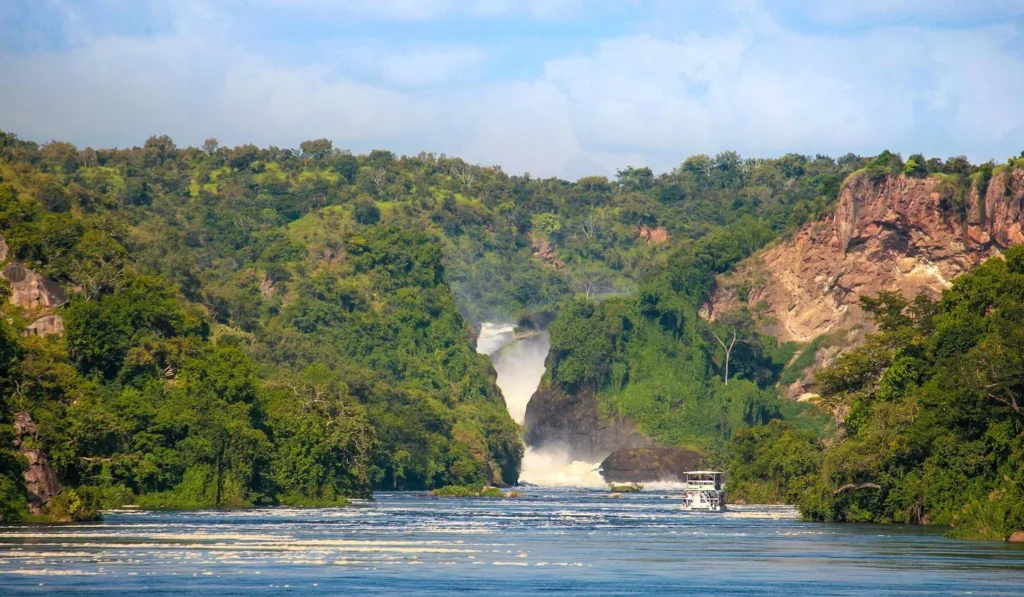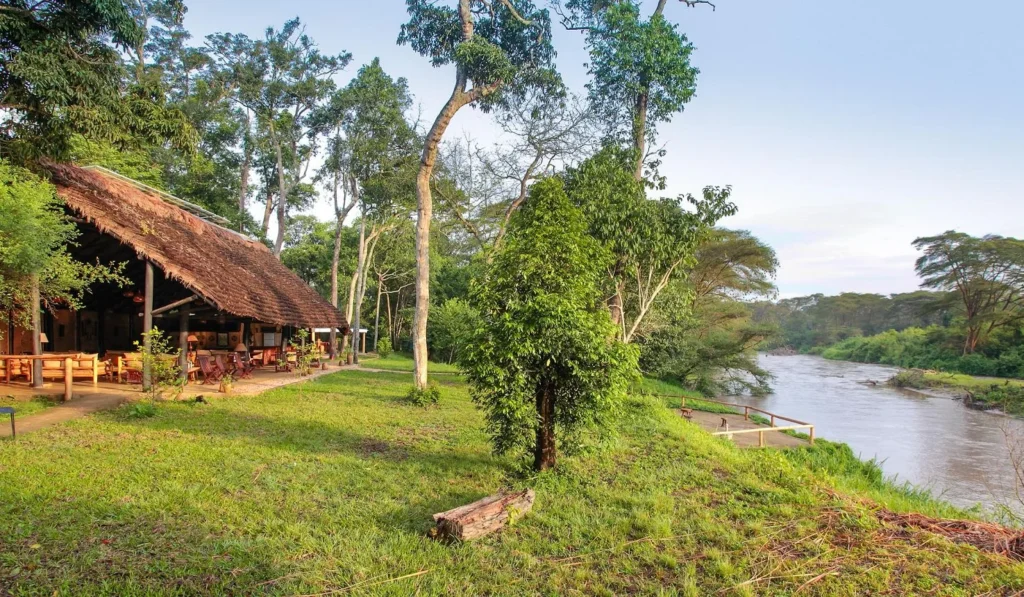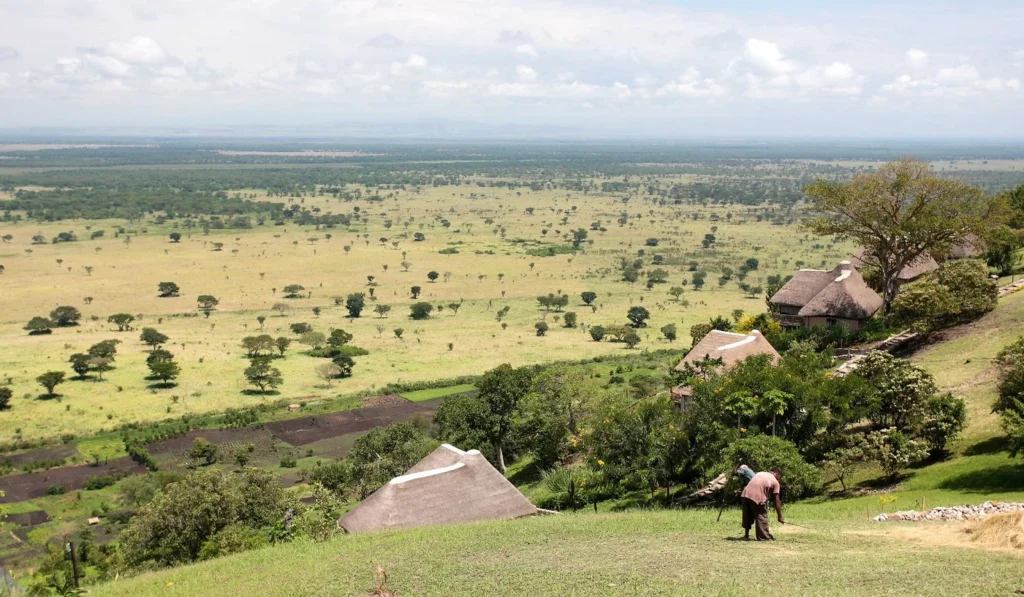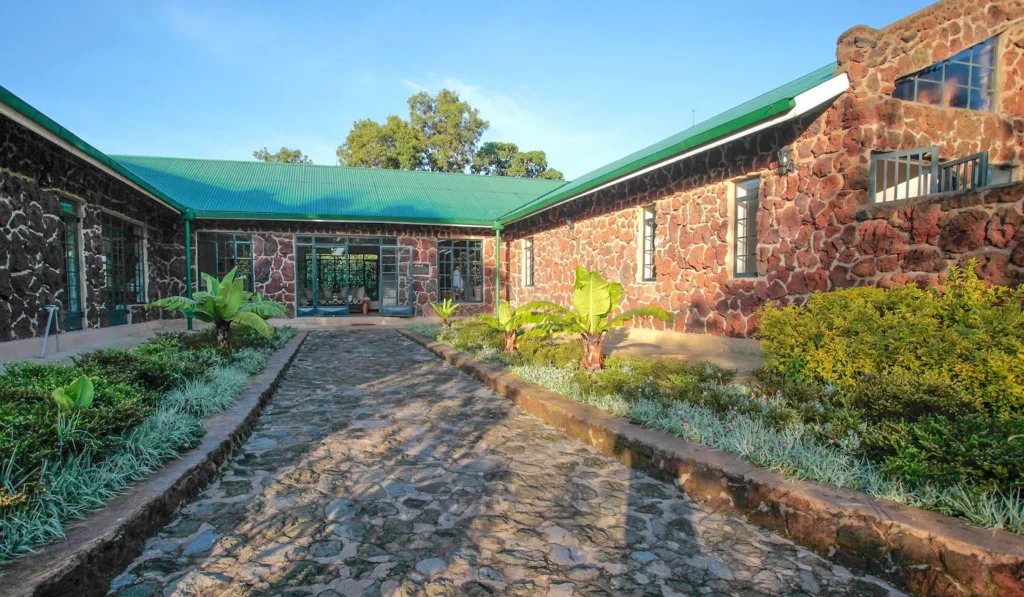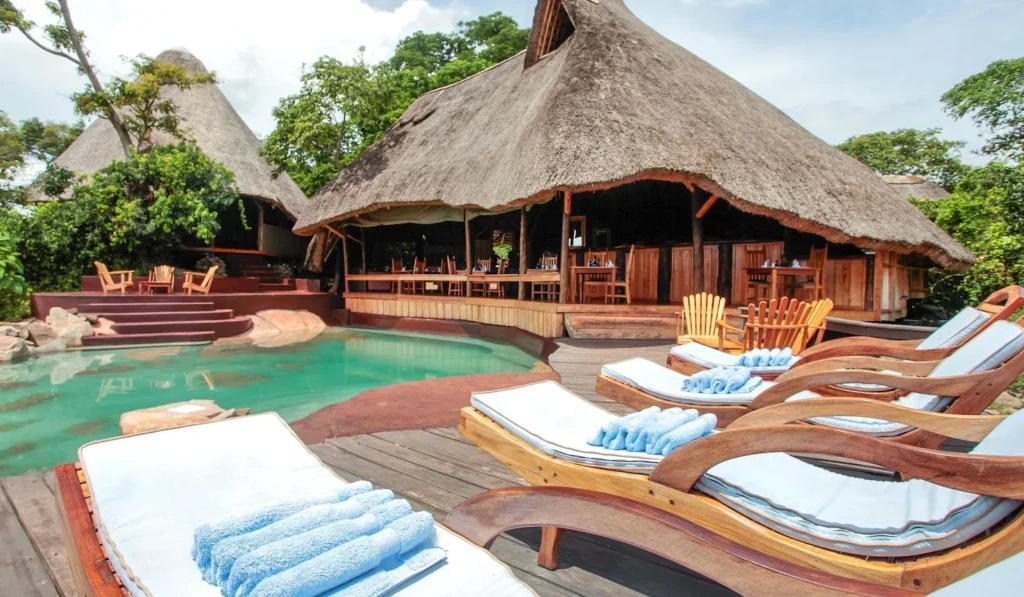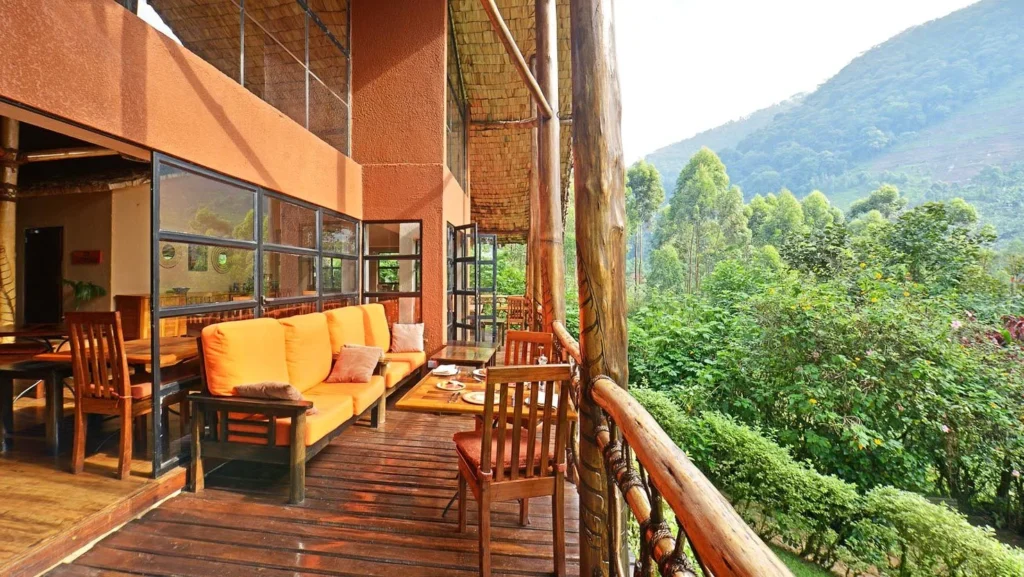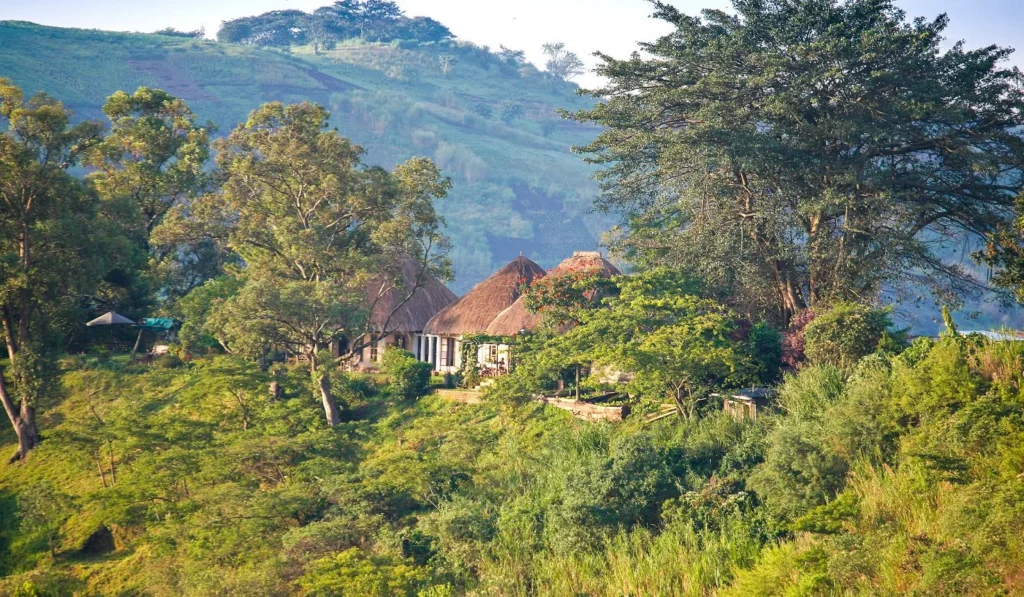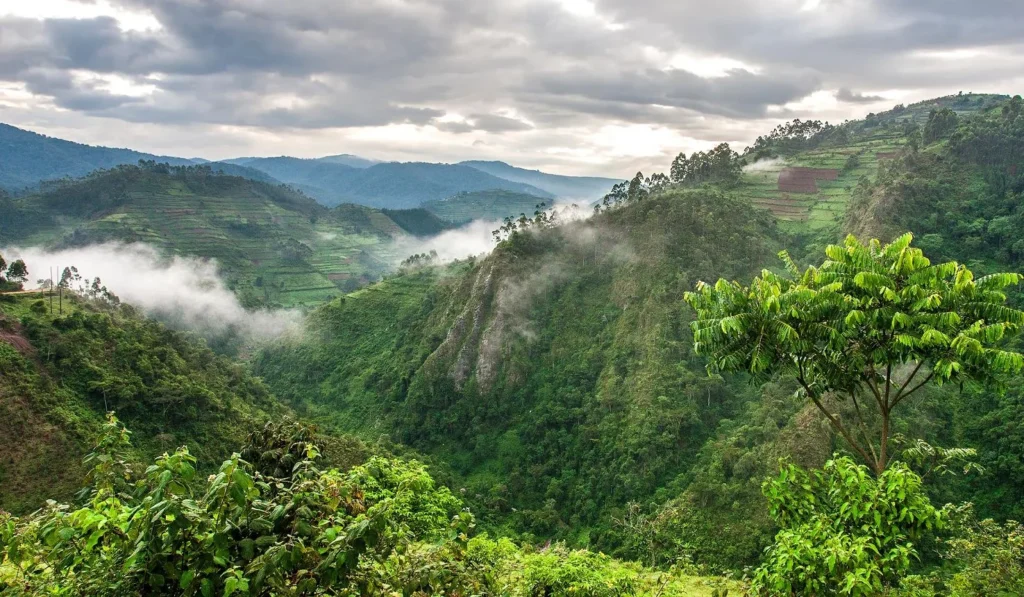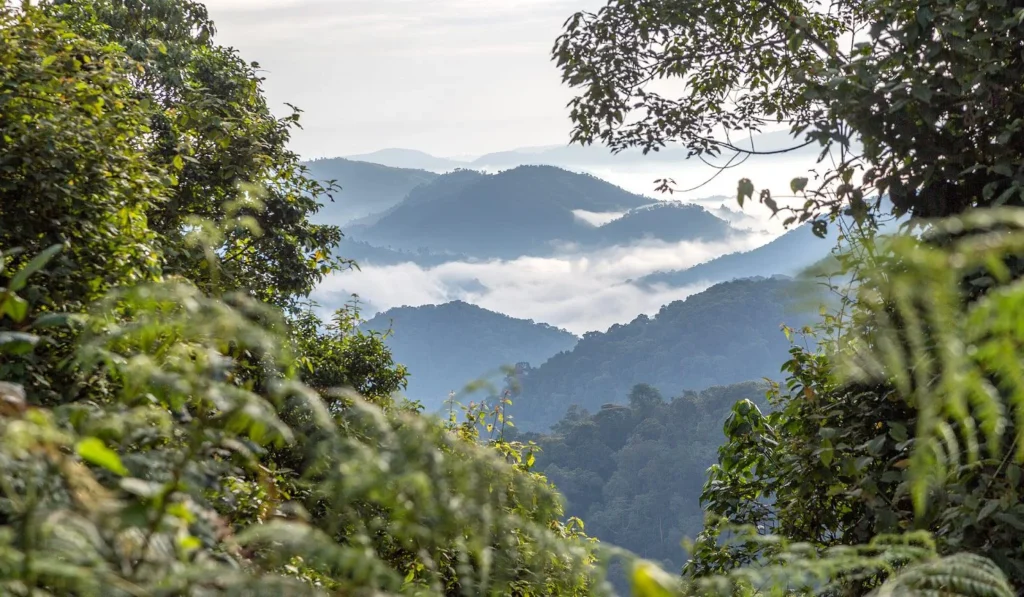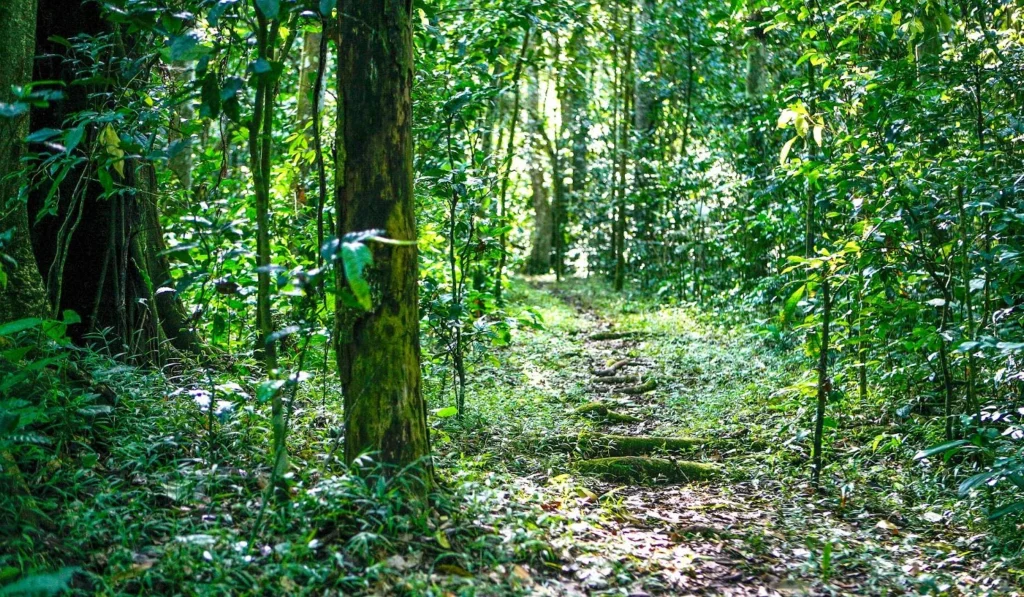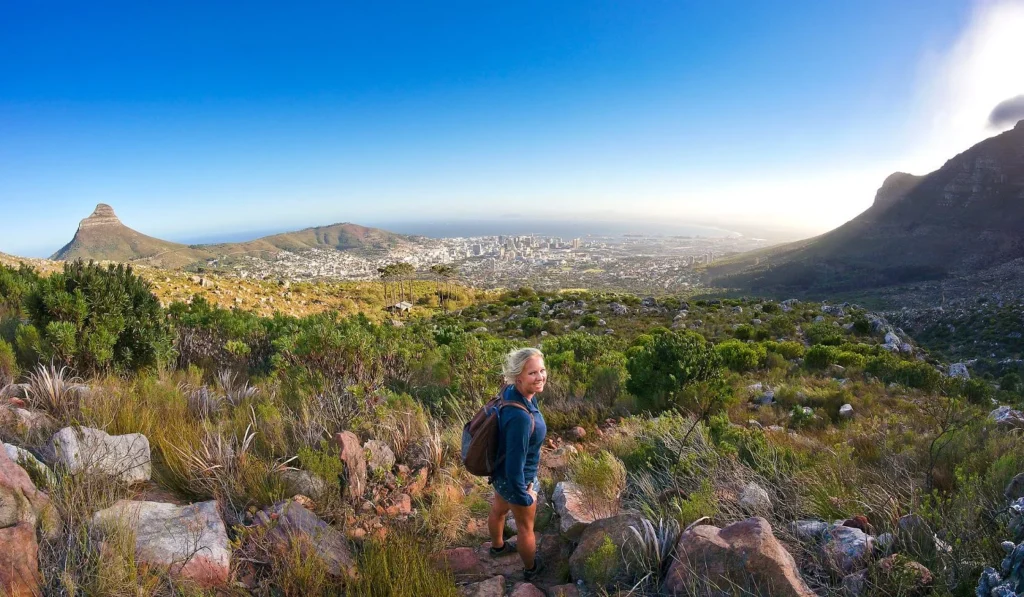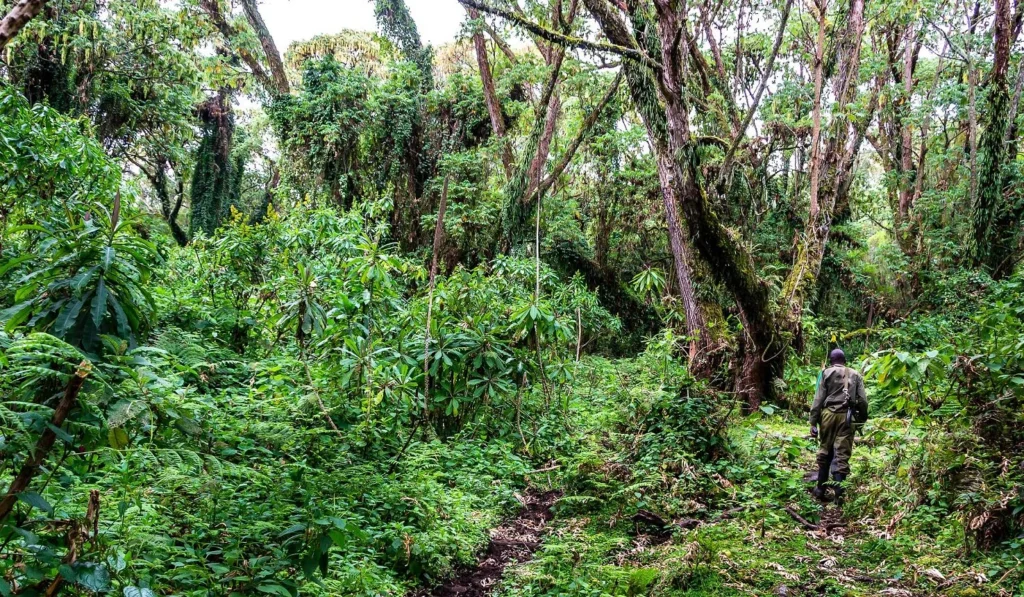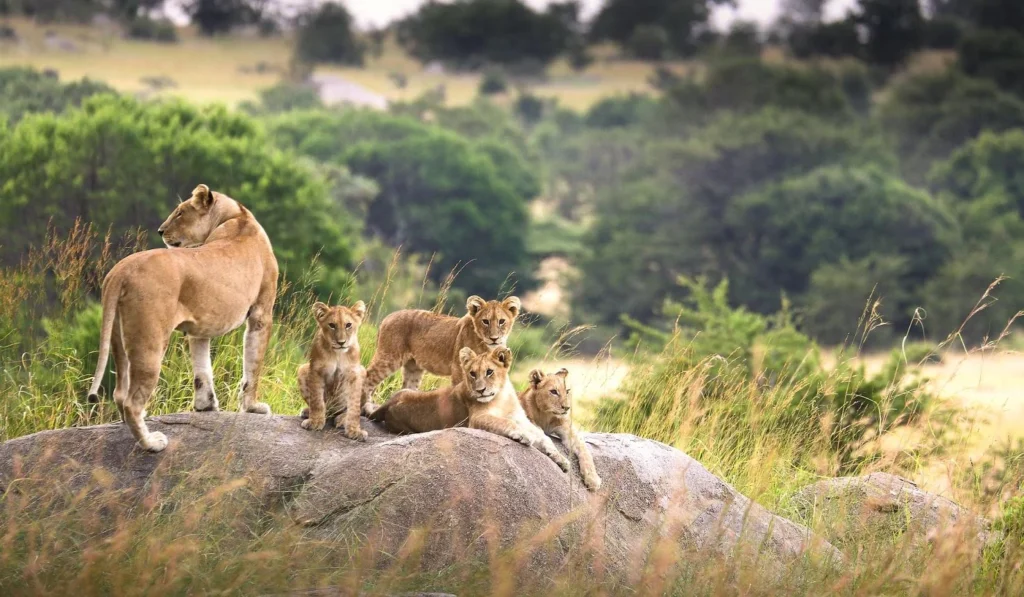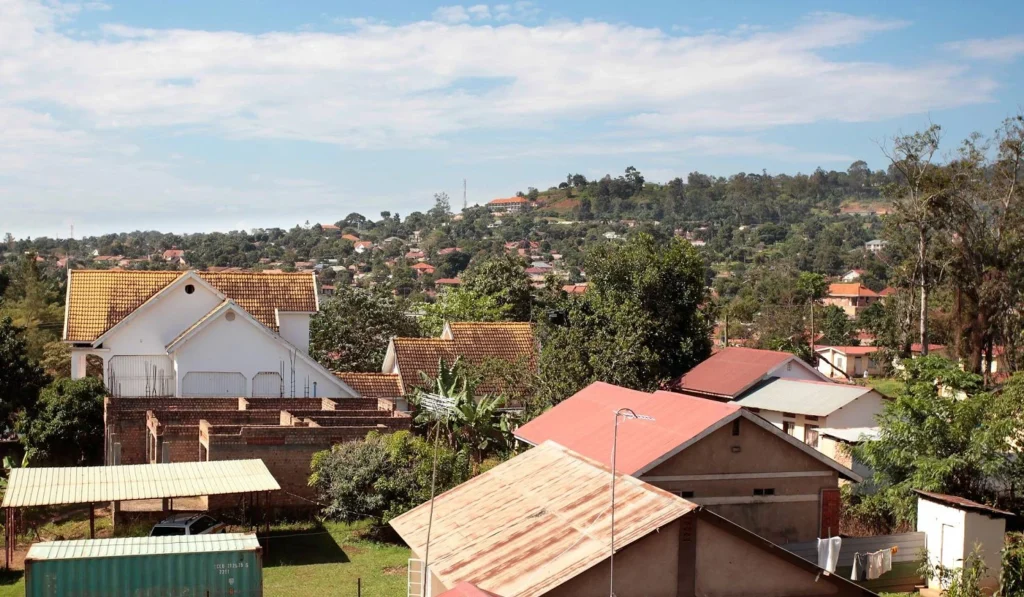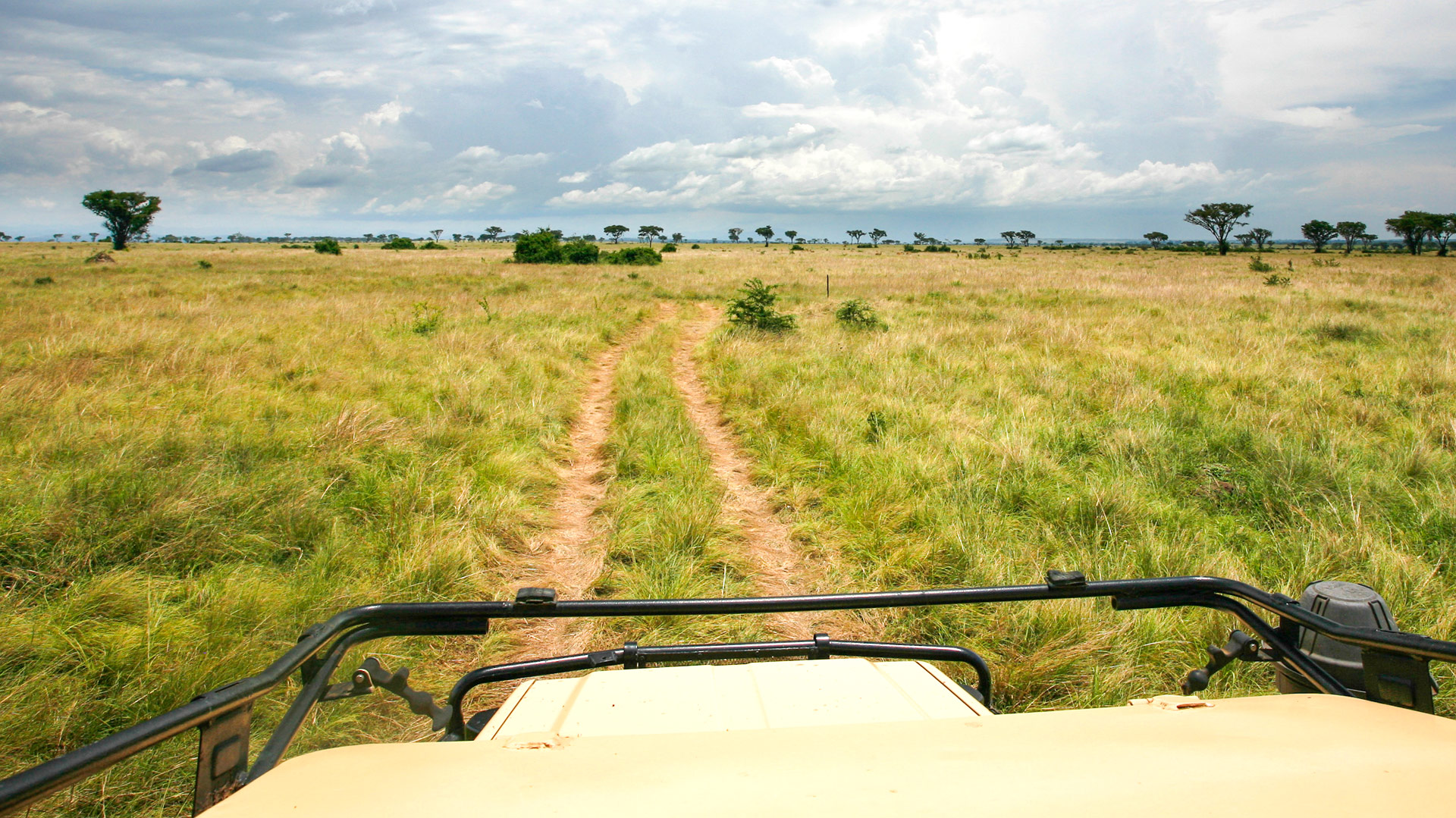
Safari to Queen Elizabeth
Queen Elizabeth
is a an unusually diverse
reserve in west Uganda
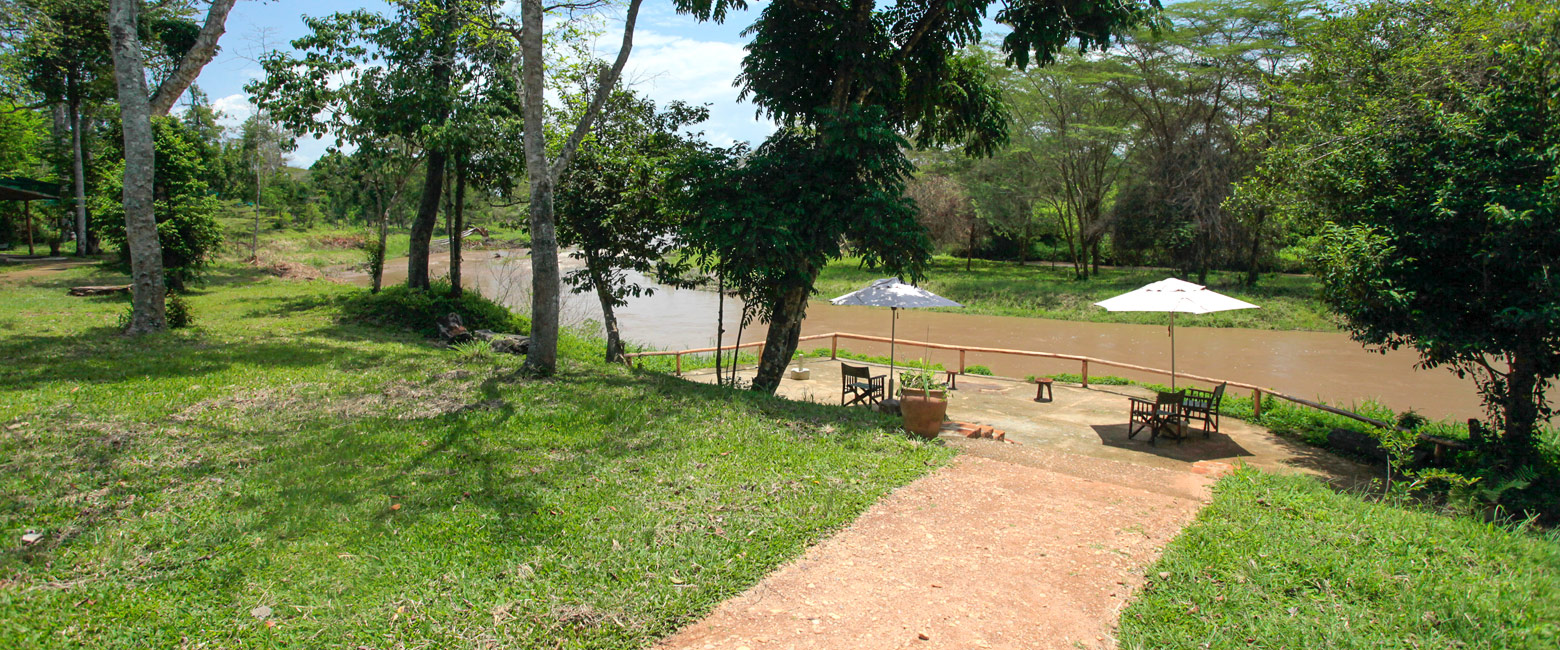
savanna safari and chimpanzees
At almost 2000 square kilometres Queen Elizabeth National Park is a very substantial conservation area and is, arguably, the most accessible and productive savanna wildlife reserve in Uganda.
The park was founded in 1952 as Kazinga National Park. It was renamed two years later to commemorate a visit by Queen Elizabeth II. It is generally referred to simply as ‘QE’.
It lies across the floor of the Great Rift Valley, between Lake George in the northeast to Lake Edward in the southwest. The two lakes are connected by the Kazinga Channel, after which the reserve was originally named.
The park lies at the heart of a very large and important conservation area which also includes the Maramagambo Forest, the Kigezi Game Reserve, the Kyambura Game Reserve and the Kibale National Park in Uganda, as well as the Virunga National Park in the Democratic Republic of the Congo.
QE contains a range of different scenery and ecosystems, being dominated by open savanna, but with substantial tracts of forests and woodlands. It is also famous for its volcanic features, including cones and deep craters, many of which contain scenic lakes. The Katwe crater lake is used for commercial salt extraction.
The area is home to an impressive 95 mammal species, including African buffaloes, Ugandan kobs, hippopotamuses, Nile crocodiles, African elephants, leopards, lions and chimpanzees.
The park also hosts over 600 bird species, claimed to be the highest of any reserve in Africa and a testament to the diverse range of habitats to be found in this remarkable area. Highlights include martial eagles, African fish eagles, shoebill storks, papyrus gonoleks, lesser flamingos, greater flamingos, white-tailed larks and Verraux’s eagle owls.
Queen Elizabeth National Park may be one of the best areas for savanna safari in Uganda, but by the standards of other countries it really is rather weak. It’s not a place that you would necessarily travel around the world to visit, but if you are already planning to visit the gorillas of Bwindi Forest and chimpanzees of Kibale Forest, connecting the two by means of an overland journey through this area makes a great deal of sense.
Unfortunately the fact that vehicles are not permitted to go off-road makes it difficult to take full advantage of important sightings.
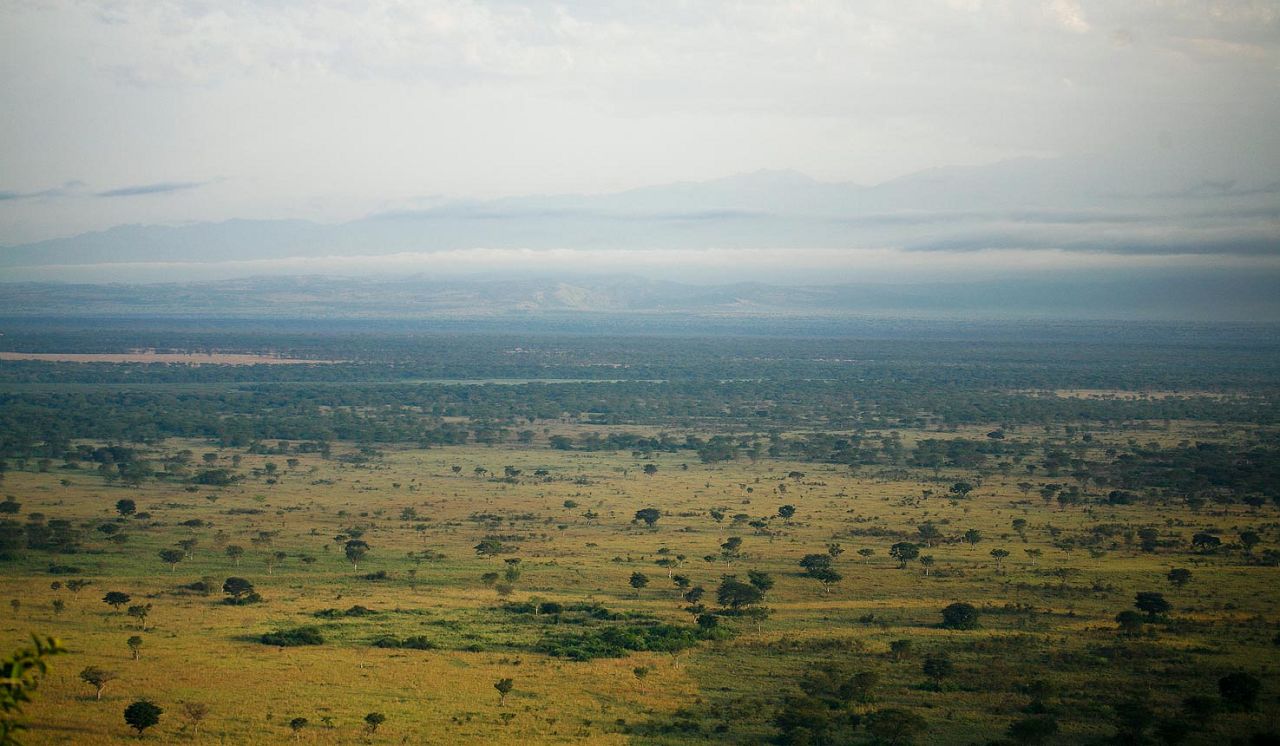
Gallery
Map
Of the 30-50% of visitors who choose to explore beyond Bwindi Forest, almost everyone heads north by road to first pass through this Queen Elizabeth area.
The usual stay duration is just 1-2 nights, which can be extended to 3-4 nights if you also include the Ishasha Sector to the southwest.
Seasonality
Queen Elizabeth National Park is usually best visited during the May-Sep and Dec-Feb dry seasons, when the grasses are lower and wildlife is clustered along the lake.
However, these factors are significantly lesser here, where the climate is heavily influenced by the surrounding tropical forests.
Getting around
Up to around 2015 getting around Uganda was something of a mission. The only real option was to travel by guided overland safari, which might sound great, but the reality was that most of the hard miles were on relatively uninteresting main roads rather than interesting safari areas. It was both tiresome, time consuming and, for smaller groups, surprisingly expensive.
Fortunately there is now a reliable schedule of light aircraft flights connecting the main safari areas, operating out of the hub airport at Entebbe and visiting Bwindi Forest, QE, Kibale Forest, Murchison Falls and Kidepo Valley.
However we are big fans of overland safari when done in the right areas, so we now maintain a fleet of safari vehicles out in the Western Rift Valley, which enables us to connect by road between Bwindi Forest, QE and Kibale Forest, as an optional inset to a flying safari.
The Queen Elizabeth National Park area can therefore be connected by light aircraft, usually in a clockwise loop, usually in from Bwindi Forest and out to Kibale Forest or Murchison Falls. There are multiple airstrips in the area to serve the various lodge locations.
QE is also the middle stop for the overland segment driving north from Bwindi Forest to Kibale Forest.
Where to stay
The accommodation options in Queen Elizabeth National Park are scattered through the three main sectors.
We generally lean towards those in the Kyambura Sector to the northeast, since that means we can start the chimp trekking there nice and early in the morning, as well as access the wide range of cultural activities that are available in the villages and farmlands beyond. In this area the stand-out options are Kyambura Gorge Lodge and Katara Lodge.
The classic location is the Kazinga Sector, from where there are dramatic Rift Valley views over the lakes. However the one accommodation here, Mweya Safari Lodge, is very large and dated.
The third option is the Ishasha Sector, far off to the south. The main accommodation option there, Ishasha Wilderness Camp, offers the most authentic safari atmosphere and is the most focused on wildlife viewing.
In an ideal world it would be nice to deploy nights in both the Kyambura and Ishasha areas, perhaps over 4-5 nights in total. Unfortunately most people prefer to pass through much quicker, staying just 1-2 nights in the area.
slightly better during the May-Sep and Dec-Feb dry seasons
let us know your thoughts about Uganda
and we will help you create the perfect safari
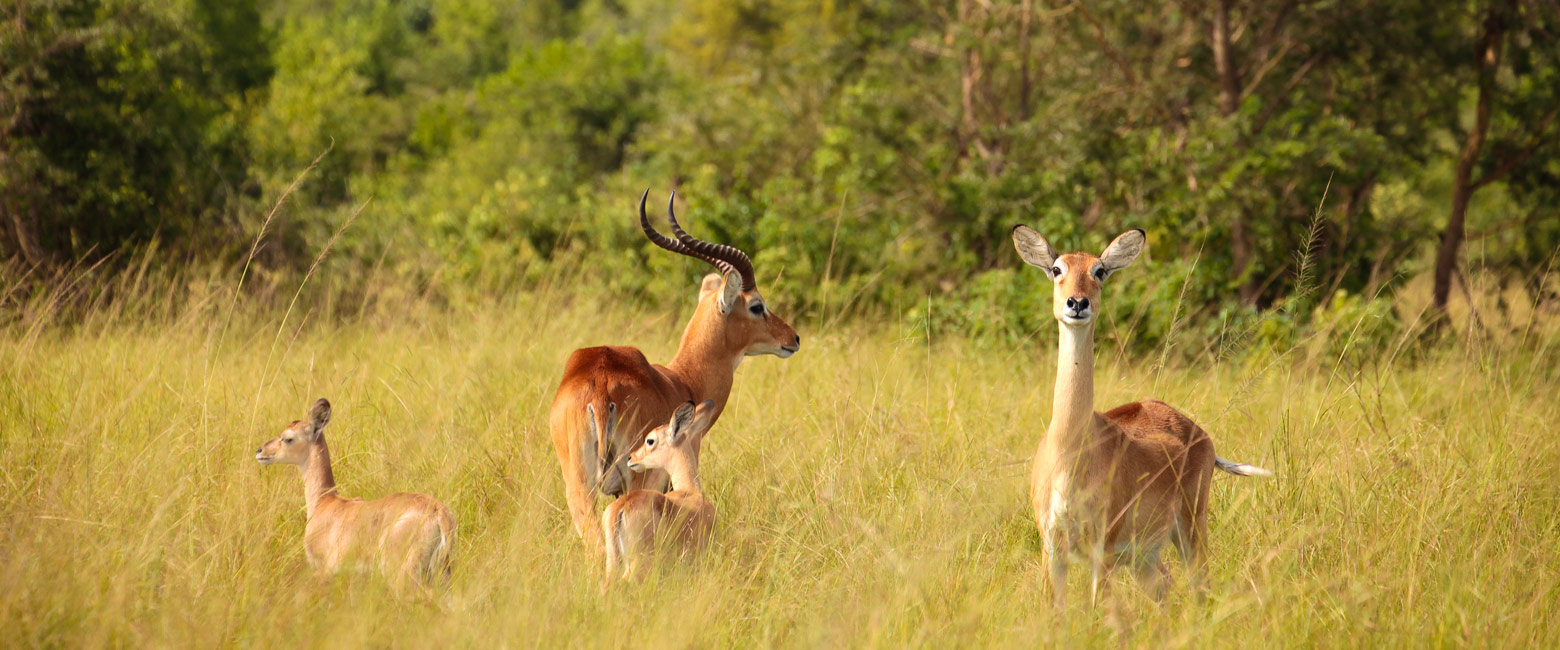
Extraordinary tailor-made adventures,
from earthy and edgy to easy and extravagant
From around USD 2500 per person, you set the ceiling
Sample Trips
Here are some of our popular trip shapes
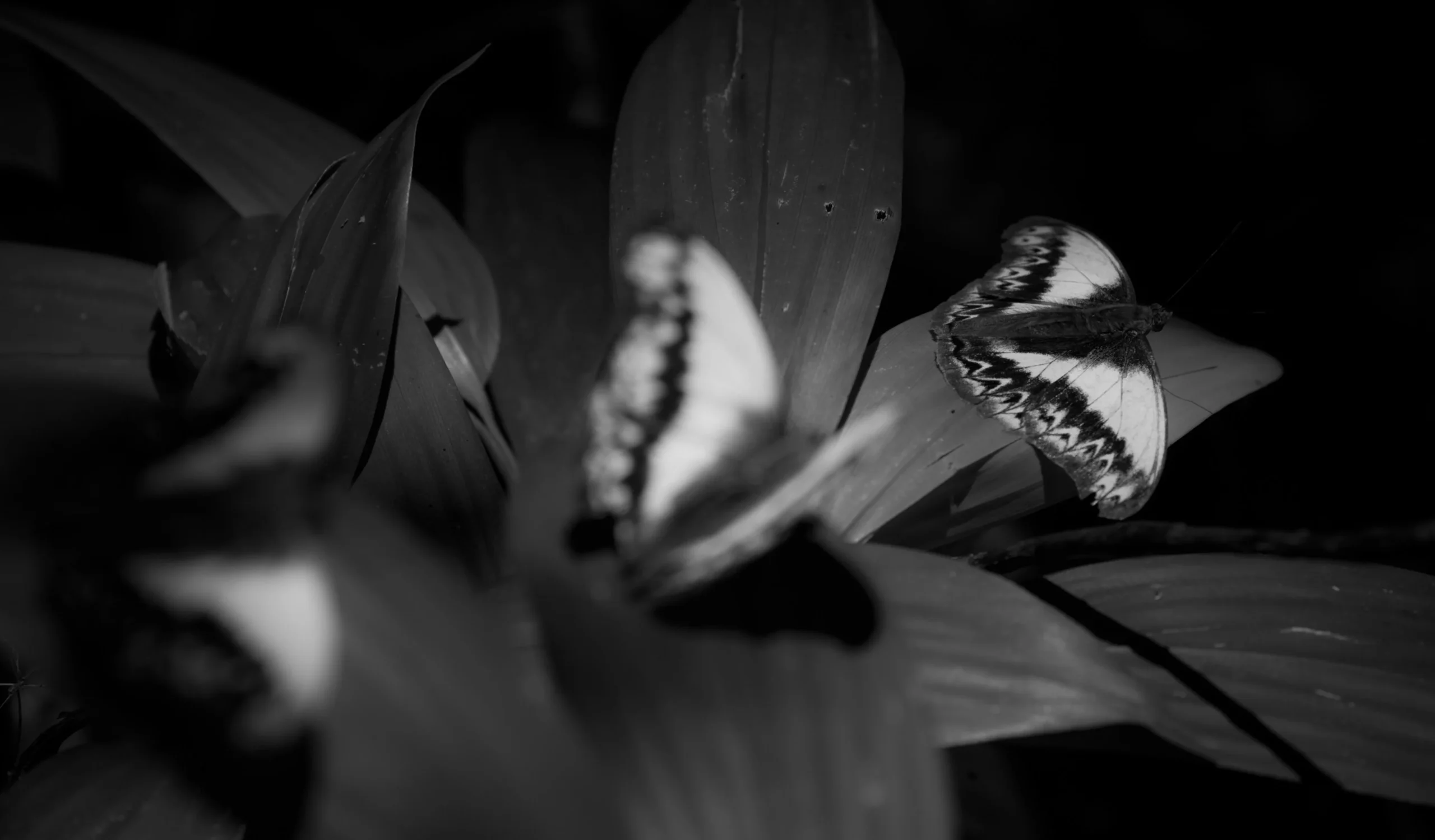
Get started on your trip
It’s never too soon to get in touch, we are here to help with every stage of your planning.
Best Lodges
We regularly inspect and photograph all of the the best lodges, to ensure that we always recommend the most suitable options
Key Locations
Take a look around related locations. Click ‘View more’ to explore locations further afield.























